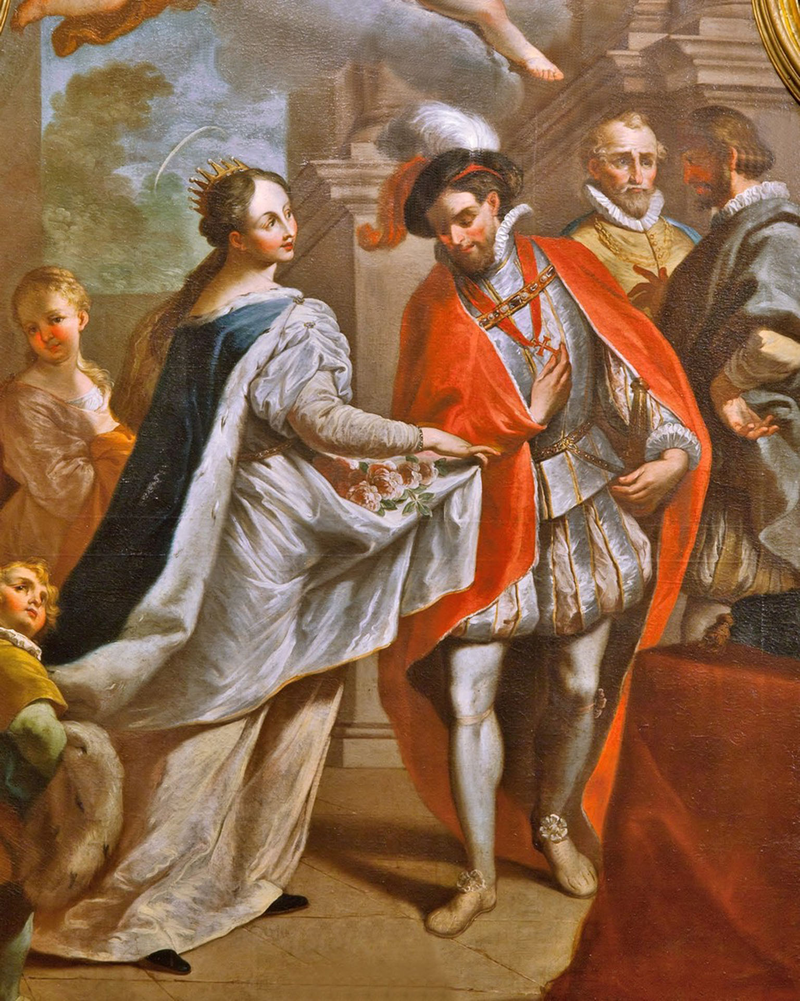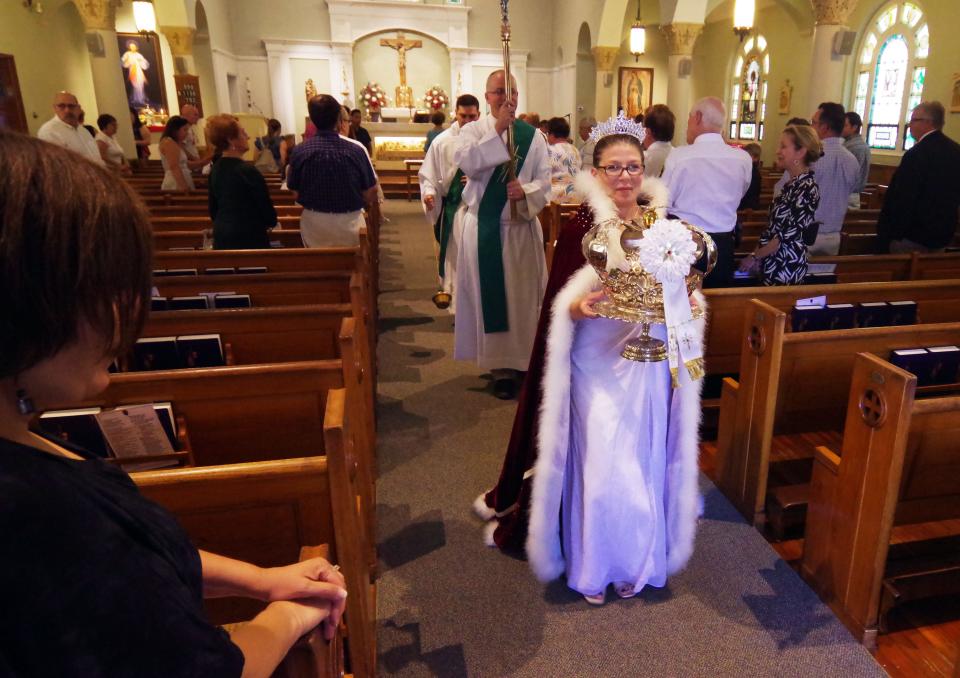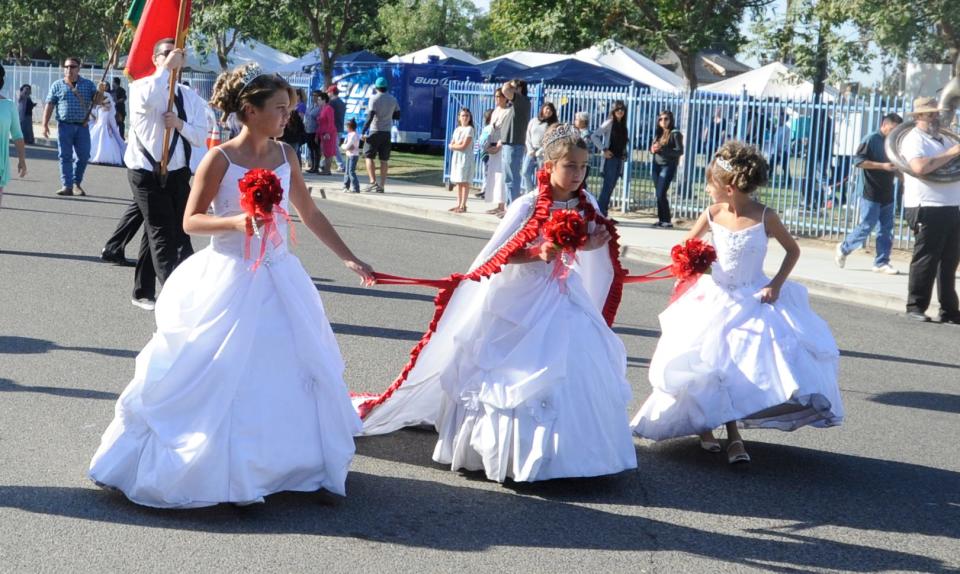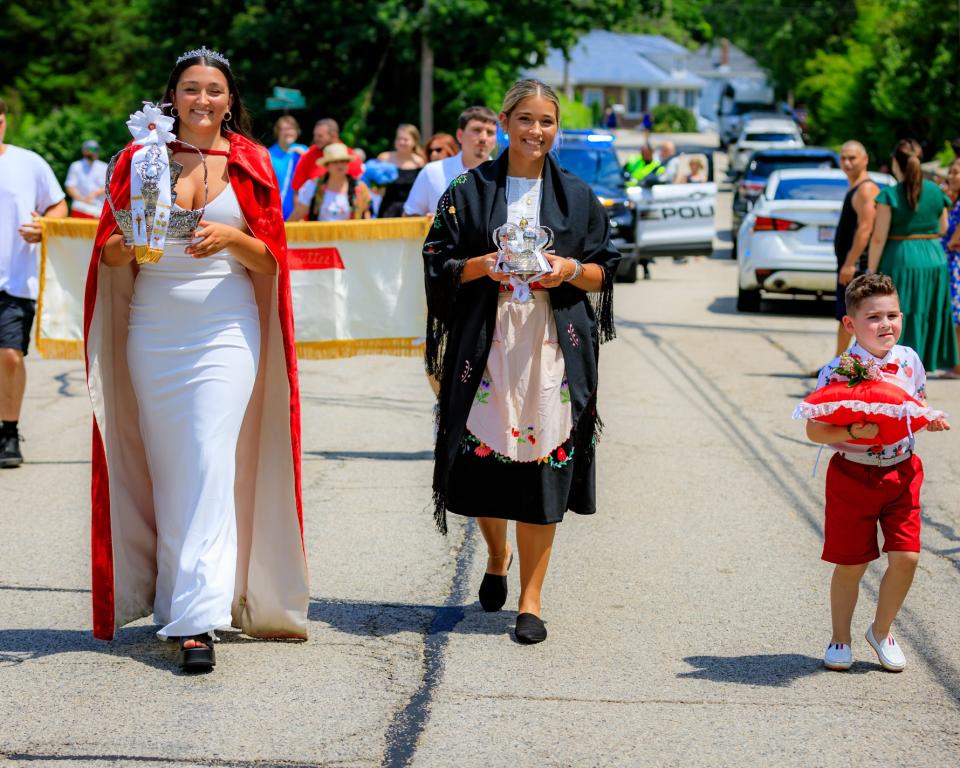Southcoast Wonders: How Holy Ghost feasts began, and why they have 'queens'
After a two-year break due to the COVID-19 pandemic, the Great Feast of the Holy Ghost of New England is coming back to Fall River.
The annual celebration of Portuguese American culture is a key feature of summer in Fall River, drawing tens of thousands of people of Azorean heritage from across the country, Canada and Portugal to Kennedy Park in the city’s South End. There are multiple Holy Ghost feasts in our area every year, and each one is at once a spectacle of Catholic pageantry, a setting for extended family reunions, a large-scale stage production where the lives of island peasant folk are portrayed by descendants, a Middle Ages history lesson, and simply a great food and entertainment festival.
Even people who are casual feast-goers recognize the trappings of a Holy Ghost festa — especially the giant crown and the young girls in elaborate gowns and robes portraying the role of the “queen” of the festa. How did that start, and why does a feast need a queen?
Azorean icons: Why do Fall River area homes have Virgin Mary statues in bathtubs?
Going to the feast?: The Great Feast of the Holy Ghost of New England is back; here’s what you can expect
From royalty to a nunnery: The life of Queen Isabel
The original festa queen is Elizabeth, or Isabel, of Portugal. She was a princess, born in 1271 to King Peter III and Constance II of Aragon, a medieval kingdom in northeast Spain. Princesses’ lives were rarely as wholesome as Disney films would have us believe, so at age 10, Isabel was arranged to marry 19-year-old King Dinis of Portugal in exchange for control over several communities. Times were different, folks!

Their wedding was celebrated in 1288, when Isabel was 17 — but it was, at first, not a happy marriage. Dinis was a womanizer, fathering two kids with Isabel and a half-dozen or so illegitimate children with mistresses, which caused complications we’ll return to in a moment.
But Queen Isabel was a faithful Catholic, noted for her devotion to God and service to the needy. Some sources have her attending daily Mass, fasting regularly, inviting lepers into the castle to wash and clothe them, and feeding the hungry. Isabel is associated with the “miracle of the roses,” a story also attributed to several other historical figures. As the legend goes, one day Isabel hid meat and bread under her robes to sneak out of the castle and feed some hungry peasants. Dinis, who didn’t approve of her consorting with the poor, demanded to know what she was carrying. Isabel opened her robes to reveal that the food had miraculously transformed into a bouquet of roses — so Dinis let her go. The legend ends there, but one hopes for the hungry peasants’ sake that the roses turned back into food.

Isabel also took an active role in politics in the Kingdom of Portugal as a diplomat, intervening when King Dinis feuded with his son, Prince Afonso — as the story goes, literally, by riding between their two armies on the battlefield and convincing her husband not to kill him. Afonso was upset since he was less favored than one of Dinis’ illegitimate sons, who also happened to be named Afonso. Isabel later helped broker peace treaties between those two Afonsos, and then between her son and a completely different third Afonso, the country being overrun with hotheaded Afonsos at the time.
After Dinis died in 1325, Isabel became a Franciscan nun devoted to charity. She was canonized 300 years later, and is the patron saint of queens, victims of adultery and — of course — difficult marriages.
Why are Olmsted parks important?: The history of 8 Fall River projects
Carrying on the tradition of generosity
The traditions of the Holy Ghost festa draw on Isabel’s generosity and kindness. In particular, the pensãos, gifts of meat, bread and wine, are derived from the legends of Queen Isabel’s charity to the poor.
Professor João Leal of the Universidade NOVA de Lisboa in Portugal is a cultural anthropologist who has studied and written about Azorean American culture. He studied Azorean-American festas extensively as part of his fieldwork, and started a website that tracks them, festasdoespiritosanto.pt. He said wherever Azoreans go, Holy Ghost feasts follow.
According to Leal, there are over 90 Holy Ghost festas across New England every year, 100 in California, and almost 80 in Canada.
“So we are talking about 300 festas in North America including the U.S., Canada, Bermuda, Hawaii," Leal said. “It’s an interesting thing because some Azoreans get retired, they move to Florida, and all of a sudden there are a dozen Holy Ghost festas taking place in Florida, organized by retired Azorean people.”

According to Leal, in his paper “Ritual, Transnationalism and Social Remittances: Two-Way travels of the Holy Ghost,” the first Holy Ghost festa in the United States happened in 1865 in California, with New England festas first cropping up in the 1880s. Stories were published of Holy Ghost festivals in our area beginning in the late 19th century, including a June 11, 1899, "gala time at John Brazil’s farm in South Portsmouth … after the fashion of observances in the old country” — or the Flint in 1904, where “five heifers and a proportionate amount of bread were distributed among the poor.”
But the Holy Ghost festa wasn’t just a tradition brought from the Azores to here. Azoreans in the United States developed traditions of their own that migrated back to the old country — including, Leal said, the festa queens.

“They didn’t exist in the Azores,” Leal said. "That's a Californian invention."
Leal writes that festa queens are young girls, chosen by the Holy Ghost brotherhood or by the mordomo, the feast organizer, who take part in the processions and the symbolic coronation — and there can be multiple queens. “They wear special dresses, similar to bride’s gowns, and an elaborate (and expensive) embroidered velvet cape decorated with spangles and ermine. Tiaras and elaborate hairstyles are also of great importance,” he writes — costs that can range into the hundreds, thousands, or even tens of thousands of dollars at festas in California, where the queen culture is more pageant-like.

One suggestion links festa queens to North American beauty pageants, or even May Queens in civic parades, while Leal suggests the idea was borrowed from ethnic parades organized by immigrants from other European countries. However it happened, Leal said, “it was a California invention that spread to New England, that spread to Canada, and also made its way back to the Azores."
Where once charity came from the castle to the people, Holy Ghost brotherhoods embody the people lifting themselves up out of poverty. But the queens represent Isabel’s legendary example of kindness to the poor, still part of the Portuguese spirit hundreds of years later.
Dan Medeiros can be reached at dmedeiros@heraldnews.com. Support local journalism by purchasing a digital or print subscription to The Herald News today.
This article originally appeared on The Herald News: Southcoast Wonders: Holy Ghost feasts and the Azorean queen tradition

